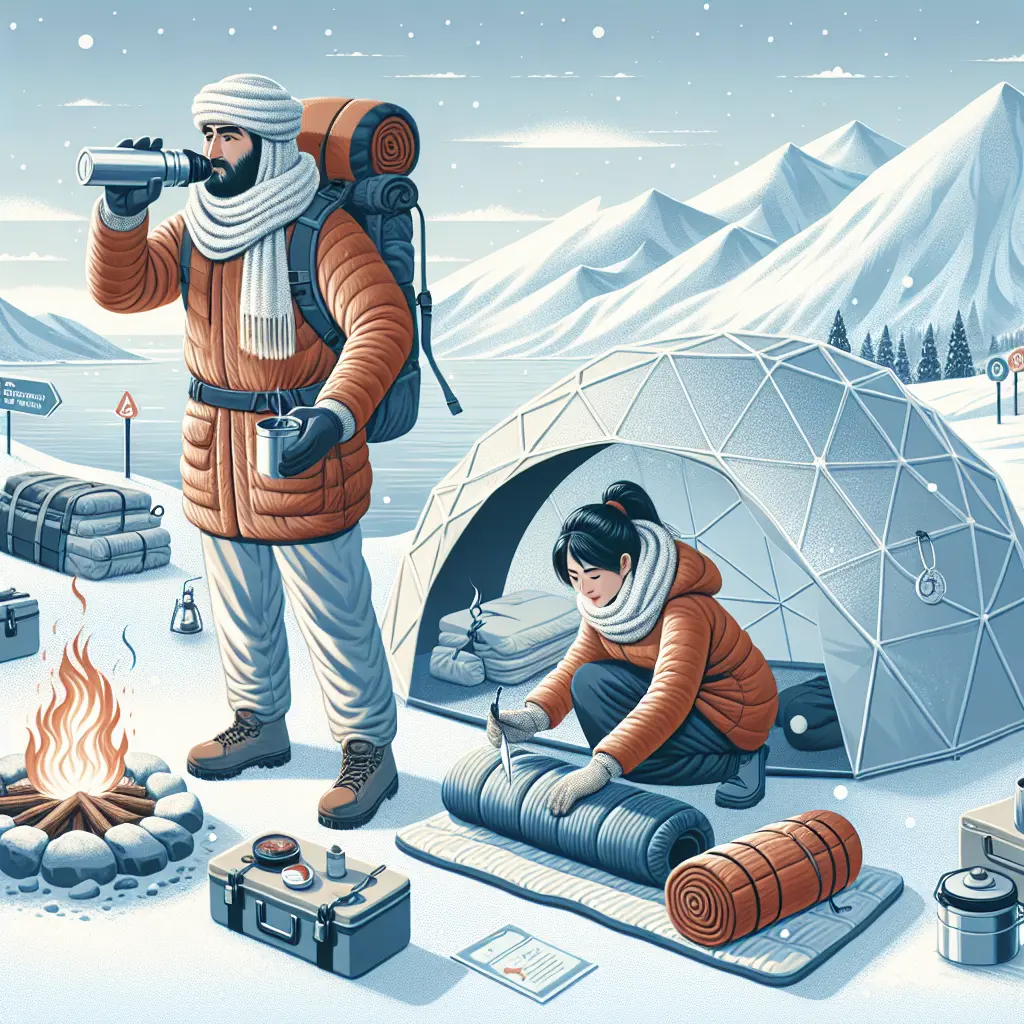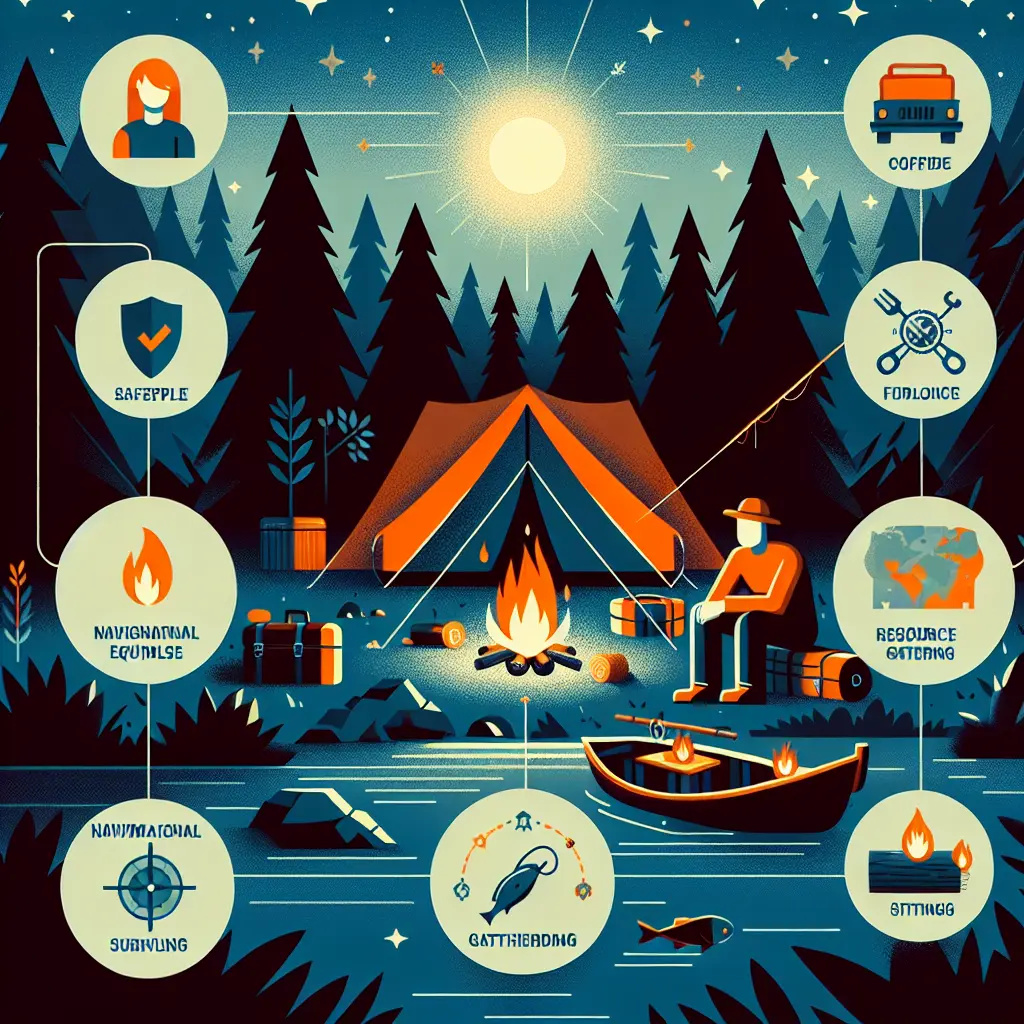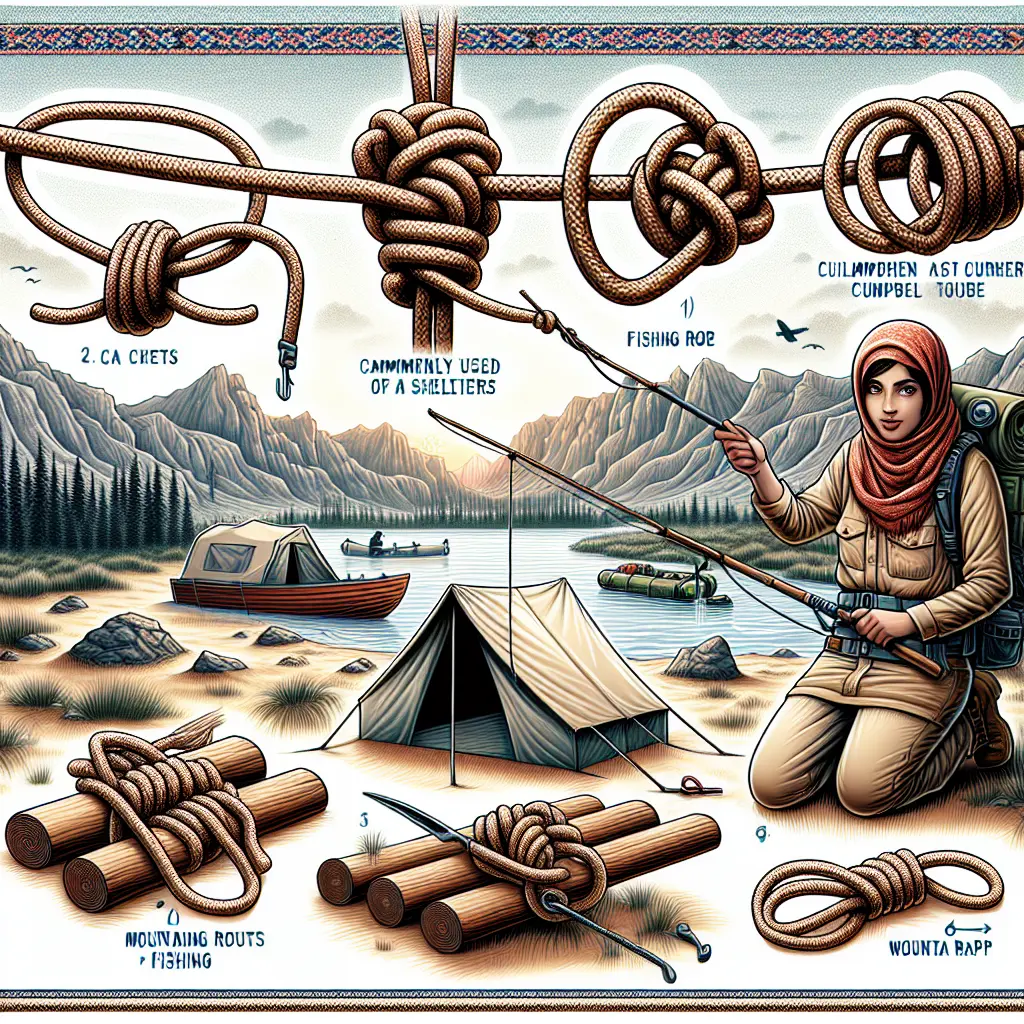Embracing the beauty of the frosty outdoors, winter camping offers an invigorating escape for adventurers seeking solitude and serenity amidst snow-draped landscapes. However, it also demands a strategic approach to ensure both warmth and safety. As temperatures plummet, mastering winter camping strategies becomes crucial for an enjoyable experience. Staying warm while camping in cold weather is not just about comfort—it's essential for survival and health.
This journey into the wilderness calls for comprehensive preparation, from selecting the right winter camping gear to understanding cold weather camping safety protocols. Outdoor survival in winter hinges on several factors, including effective layering for winter camping, which helps trap heat while allowing moisture to escape. Equally important are winter sleeping bag tips and campfire safety in winter, which safeguard against nighttime chills and potential hazards.
Insulation tips for cold camping, alongside hypothermia prevention camping techniques, are paramount to staying warm outdoors and safe. Moreover, health tips for winter camping extend beyond clothing and gear; they encompass the importance of staying dry and hydrated, even in icy environments.
With the right winter camping clothing guide and food tips for cold weather camping, enthusiasts can fuel their bodies adequately. The health benefits of winter camping are profound, offering both physical and mental rejuvenation.
Navigating this chilly adventure requires attention to every detail, from insulation to hydration in winter camping. As we delve deeper into these essential strategies, you'll discover how to transform your frosty expedition into a safe and rewarding experience, exploring everything from survival camping in winter to the delicate art of layering.
Winter Camping Strategies for Staying Warm and Safe
Winter camping offers an exhilarating experience, but staying warm while camping is paramount to both enjoyment and survival. For those venturing into the frosty wilderness, a strategic approach to winter camping strategies is crucial.
Below, we delve into various facets of safe winter camping, enriched with insights and recent updates from serialized articles.
Layering for Winter Camping: The Foundation of Warmth
Base Layer: This is designed to wick moisture away from the skin. Materials like merino wool or synthetic fabrics are ideal as they keep you dry, which is crucial for staying warm outdoors. Recent studies have shown that moisture management significantly impacts body temperature regulation during cold weather camping.
Insulating Layer: This layer traps heat close to the body. Options include fleece or down jackets, which have been shown to provide excellent insulation while remaining lightweight.
Outer Layer: The outermost layer should be windproof and waterproof, protecting against elements like snow and wind. GORE-TEX or similar materials are highly recommended.
Winter Camping Gear: Essential Tools for Survival
Selecting the right winter camping gear can make or break your expedition:
Winter Sleeping Bags: Choose bags rated for temperatures below those expected on your trip. Consider using a sleeping bag liner to add warmth, which can increase the bag's temperature rating by up to 15 degrees Fahrenheit.
Tents: Invest in a four-season tent designed to withstand heavy snow and high winds.
Sleeping Pads: These are critical for insulation from the cold ground. Use foam pads or insulated inflatable pads for the best results.
Cold Weather Camping Safety Protocols
Ensuring safety during camping in cold weather involves adhering to several key protocols:
Campfire Safety in Winter: Always clear the area of snow and use a fire pit or ring to contain flames. Keep water or snow nearby to extinguish the fire completely before sleeping or leaving the site.
Hypothermia Prevention Camping Techniques: Recognize early signs of hypothermia such as shivering, confusion, and slurred speech. Act quickly by getting the affected person into dry clothing and providing warm fluids.
Staying Dry Winter Camping: Wet clothing dramatically increases the risk of hypothermia. Always change out of wet garments immediately, and carry extra clothing.
Insulation Tips for Cold Camping
Effective insulation is vital for retaining warmth during winter nights:
Ground Insulation: As highlighted by recent field tests, doubling up on sleeping pads can significantly reduce heat loss to the ground.
Windbreaks: Set up windbreaks using tarps or natural features like boulders to shield your campsite from biting winds.
Nutrition and Hydration in Winter Camping
Proper nutrition and hydration are often overlooked aspects of health tips for winter camping:
Food Tips for Cold Weather Camping: Focus on high-calorie meals that are easy to prepare in cold conditions. Foods rich in carbohydrates and fats are ideal for providing sustained energy.
Hydration in Winter Camping: Despite the cold, dehydration is a significant risk. Melt snow for water only if no other source is available, and always boil it to eliminate pathogens. Drinking warm fluids can help maintain core body temperature.
Winter Camping Clothing Guide
Choosing the right clothing is critical for comfort and safety:
Headgear: A significant amount of body heat is lost through the head; therefore, wearing a warm hat is essential.
Gloves and Socks: Invest in insulated, waterproof gloves and socks to keep extremities warm. Consider using hand warmers for added warmth during extreme conditions.
The Health Benefits of Winter Camping
Beyond survival, winter camping offers several health benefits:
Physical Benefits: The physical exertion involved in activities like setting up camp and hiking through snow can improve cardiovascular fitness.
Mental Rejuvenation: The solitude and tranquility found in snow-draped landscapes provide a mental reset, reducing stress and enhancing mood.
Summary
In summary, mastering winter camping involves several essential strategies to ensure safety, warmth, and enjoyment. By implementing these practices, your frosty adventure can become a memorable journey through nature's winter wonderland. Key points to remember include:
- Layering: Use a combination of base, insulating, and outer layers to effectively manage moisture and trap heat.
- Essential Gear: Invest in winter-rated sleeping bags, four-season tents, and insulated sleeping pads for a comfortable camping experience.
- Safety Protocols: Practice campfire safety, recognize hypothermia symptoms early, and always stay dry to prevent cold-related illnesses.
- Insulation Tips: Double up on sleeping pads and set up windbreaks to minimize heat loss and shield your campsite.
- Nutrition and Hydration: Focus on high-calorie meals and maintain hydration by boiling snow or finding safe water sources.
- Appropriate Clothing: Protect extremities with insulated gloves and socks, and retain body heat with proper headgear.
Conclusion
These strategies not only enhance your safety and comfort but also allow you to embrace the unique health benefits of winter camping, such as improved physical fitness and mental rejuvenation. As you plan your next expedition into the snowy wilderness, consider how these insights can enhance your experience.
We'd love to hear about your winter camping adventures! What are your go-to strategies for staying warm and safe in the cold? Share your tips and experiences in the comments below.
Stay warm, stay safe, and enjoy the beauty of winter camping! Happy trails!






Leave a Comment